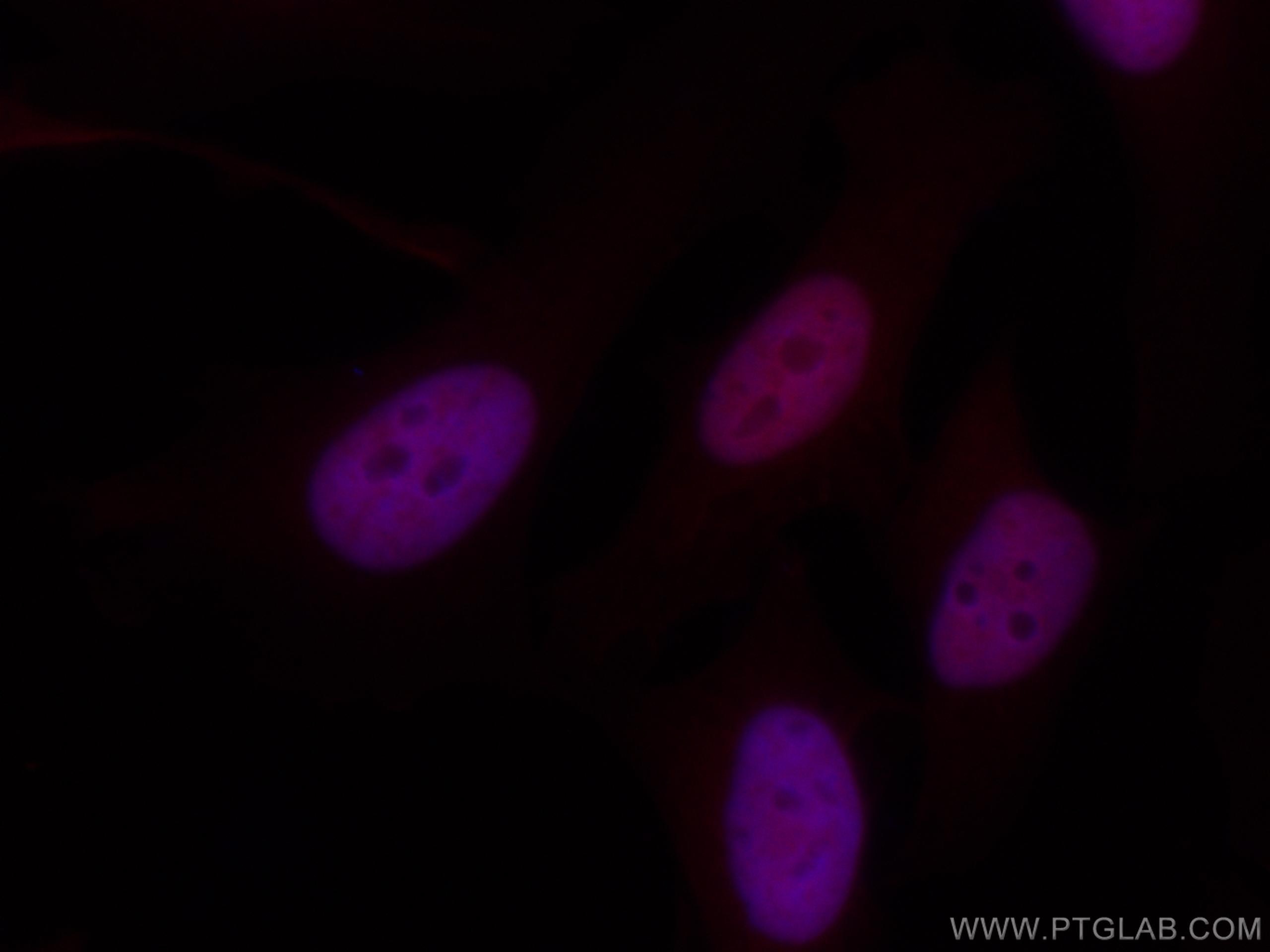Validation Data Gallery
Filter:
Tested Applications
| Positive IF/ICC detected in | HeLa cells |
Recommended dilution
| Application | Dilution |
|---|---|
| Immunofluorescence (IF)/ICC | IF/ICC : 1:50-1:500 |
| It is recommended that this reagent should be titrated in each testing system to obtain optimal results. | |
| Sample-dependent, Check data in validation data gallery. | |
Product Information
CL594-66716 targets RBX1 in IF/ICC applications and shows reactivity with Human, Mouse, Rat samples.
| Tested Reactivity | Human, Mouse, Rat |
| Host / Isotype | Mouse / IgG1 |
| Class | Monoclonal |
| Type | Antibody |
| Immunogen | RBX1 fusion protein Ag7005 相同性解析による交差性が予測される生物種 |
| Full Name | ring-box 1 |
| Calculated molecular weight | 12 kDa |
| Observed molecular weight | 12-15 kDa |
| GenBank accession number | BC001466 |
| Gene Symbol | RBX1 |
| Gene ID (NCBI) | 9978 |
| RRID | AB_2920026 |
| Conjugate | CoraLite®594 Fluorescent Dye |
| Excitation/Emission maxima wavelengths | 588 nm / 604 nm |
| Form | Liquid |
| Purification Method | Protein G purification |
| UNIPROT ID | P62877 |
| Storage Buffer | PBS with 50% glycerol, 0.05% Proclin300, 0.5% BSA{{ptg:BufferTemp}}7.3 |
| Storage Conditions | Store at -20°C. Avoid exposure to light. Stable for one year after shipment. Aliquoting is unnecessary for -20oC storage. |
Background Information
RBX1(RING-box protein 1) is also named as RNF75, ROC1 and is a requisite component of the multi- subunit SCF family E3s36-40. It mediates the ubiquitination and subsequent proteasomal degradation of target proteins, including proteins involved in cell cycle progression, signal transduction, transcription and transcription-coupled nucleotide excision repair.
Protocols
| Product Specific Protocols | |
|---|---|
| IF protocol for CL594 RBX1 antibody CL594-66716 | Download protocol |
| Standard Protocols | |
|---|---|
| Click here to view our Standard Protocols |
